Garden Report – June 2013
- By admin
- Posted in newsletter
- On June 4, 2013
- Comments Off on Garden Report – June 2013

A Note from the Garden:
Loquats are at the end of the harvest, apricots have been ripening for a few weeks but are coming in fast now. Lemons are still on the trees and the avocado trees have set their fruit for the coming fall. A fresh King salmon is in the kitchen to cook for dinner with an apricot compote. Life is good…
Plant of the Month: Artichoke
The globe artichoke, a variety hybridized for food, is Cynara cardunculus var. scolymus. It is the variety we see in stores, farmer’s markets, and in the garden that is bulbous with fleshy leaves and a large, meaty heart. If under-watered and allowed to over ripen, cut and placed in a vase, the thistle will continue to grow and will look like this:
The wild “cardoon” is the artichoke indigenous to the Mediterranean area in the family Asteraceae that is 30″ to 60″ with yellow spines. It is considered a weed in California and Australia.
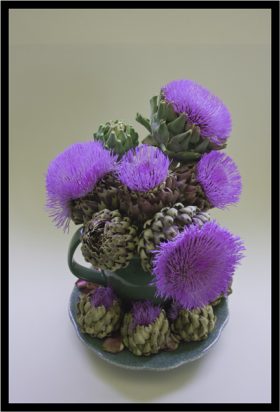
What’s Blooming Now: Oak leaf Hydrangea
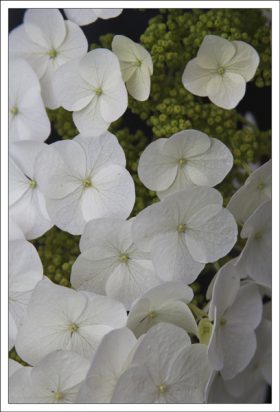
Monrovia Growers labels these fabulous foundation plants as deciduous shrubs, Hydrangea quercifolia, to 6′, and Hydrangea quercifolia ‘Pee Wee’ to 4′, however, my experience has been in warmer winters and in protected garden locations this colorful specimen plant has interesting reddish winter foliage that remains on the stem and creates additional winter interest. In our climate it can be planted in full sun, but does like partial shade as well.
Well known naturalist William Bartram documented this variety with a range from the Florida panhandle to the Carolina’s. Today, it is common at nurseries and flourishes in moderate climates such as Santa Barbara.
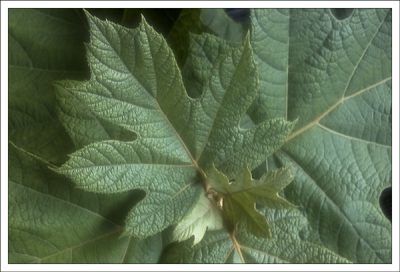
Both plants has large light green oak leaf shaped leaves with silver undersides. This is the perfect plant for a cottage garden, container or riparian woodland.
Recycled Shells: Succulated Melon Shell
The Melo amphora-Mellon Shell or marine mollusk and found throughout Indonesia and parts of Australia is harvested for food and the shell is recycled or re-purposed below as a succulent container. So many succulents look like sea anemones or coral reef inhabitants anyway it seems almost natural for them to be planted in this nautical receptacle.
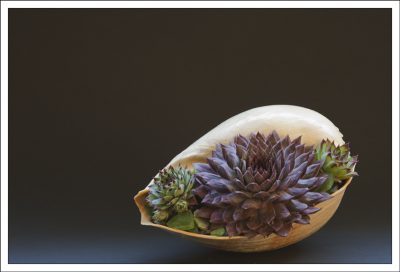
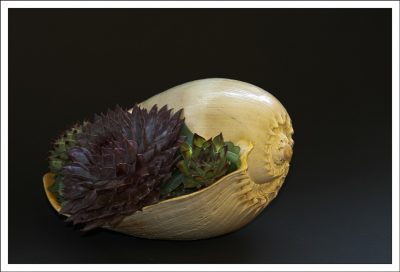
These little gems are available for purchase or as gifts. Contact Jennifer for more information.
Water Wise in Santa Barbara County: Conserve Water
The WaterWise Garden Recognition Contest is in full swing with the judging period in progress. If you applied to participate, good on ya, mate. If you want to participate for next year’s contest you may want to turn-up your garden. If so, send me a note.
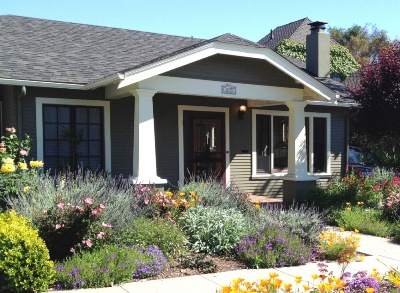
Speaking of Water: Our Potable Water Supply
Santa Barbara County has been mindful of the fact that drought is no stranger to the area. With that said, explore this link for more information on the valuable resource, water.
One of the worst droughts in California’s history, the dry years from 1987 to 1992 were severe. Young oak trees died and residents put bricks and full plastic bottles in their toilet tanks to conserve water. And flushing every time was not the norm, it was the draconian era of our modern time. In 1992 the Santa Ynez River bed was visible at the bottom of Lake Cachuma. With no water for irrigation, lawns were painted green.
The weather cycle is in a drought phase now, see map.
Weather Report by NOAA – 7 Day Forecast:
This site, NOAA.gov, is a top priority for accurate weather reports and forecasts. Tune in to get up to date so that you can adjust your irrigation system accordingly.
Garden Tips:
- Clean and sharpen your tools
- Control mosquitoes with fish delivered by Vector Control of Santa Barbara or Mosquito Dunks in small water features – available in liquid or granules.
- Start an herb and vegetable garden this month
- Always clean shears and clippers with a bleach solution to avoid spreading disease
- Lawn mowers spread grasses and weeds from lawn to lawn
- Set gopher traps and tell the ground squirrels to go home!
- Conserve water by installing a thick layer of mulch and water in the morning
- Replace your lawn with less water demanding plants
- Check landscape lighting timers to adjust for shorter daylight hours
- Snail bait by Sluggo is pet friendly and will biodegrade

